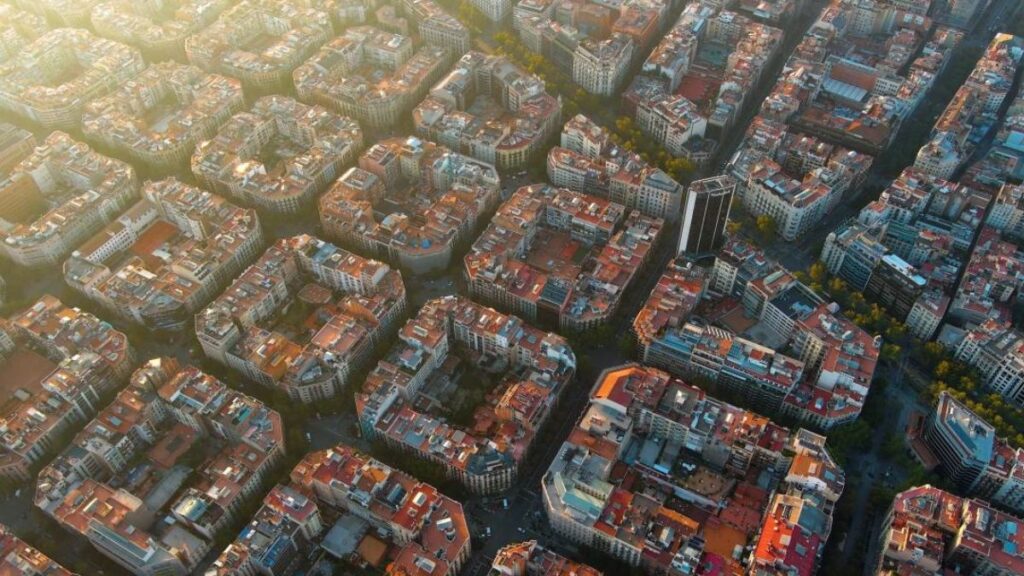Welcome to Axurbain, a vibrant city where innovation meets urban living. In today’s fast-paced world, cities face unique challenges that demand creative solutions. Urban innovation is not just a buzzword; it’s a vital force shaping how we live, work, and interact with our environments.
Imagine walking through streets filled with green spaces that promote sustainability or using smart technologies that streamline daily tasks. These ideas are no longer part of some distant future—they’re happening now! As we explore the concept of urban innovation in this blog post, we’ll look at inspiring examples from around the globe and dive into what makes Axurbain stand out on this map of progress.
Join us as we uncover the roles played by governments, businesses, and everyday citizens in driving forward-thinking initiatives. Together, let’s navigate the complexities and celebrate successes while also acknowledging obstacles to creating truly innovative urban landscapes. Get ready for an exciting journey through Axurbain’s transformative projects—let’s see how they’re revolutionizing city life!
The concept of urban innovation and its importance
Urban innovation is a dynamic approach to addressing the complexities of city living. It merges technology, design, and community engagement to create solutions that improve urban environments.
At its core, urban innovation seeks to enhance efficiency and sustainability in cities. This often involves rethinking transportation systems or integrating green spaces into densely populated areas. The goal? To build habitats where people thrive.
In an era marked by rapid urbanization, innovative strategies are essential for tackling issues like pollution, traffic congestion, and social disparity. Cities that embrace this concept not only become more livable but also attract investment and talent.
Moreover, urban innovation fosters inclusivity by involving diverse stakeholders in the planning process. When citizens have a voice in shaping their surroundings, it leads to stronger communities and a shared sense of ownership over public spaces.
Examples of successful urban innovation projects around the world
Cities around the globe are embracing urban innovation with inspiring projects that reshape their landscapes. In Barcelona, the “Superblocks” initiative has transformed congested streets into vibrant pedestrian zones, fostering community engagement and reducing pollution.
On the other side of the world, Singapore’s Gardens by the Bay showcases how nature can flourish in an urban setting. This futuristic garden not only enhances biodiversity but also serves as a green lung for residents.
In Curitiba, Brazil, innovative bus rapid transit systems have revolutionized public transport. The city effectively reduces traffic congestion while connecting diverse neighborhoods.
Meanwhile, Amsterdam is leading in sustainable energy solutions with its smart grid technology. This empowers citizens to generate and share renewable energy seamlessly within their communities.
These examples illustrate how creativity and collaboration can lead to remarkable changes in urban environments across different cultures and contexts.
The role of governments, businesses, and citizens in driving urban innovation
Urban innovation thrives on collaboration. Governments set the stage by creating policies that encourage development and sustainability. They provide funding for projects, establish regulations, and foster a culture of innovation.
Businesses play a critical role as well. Startups and established companies alike drive technological advancements. They bring fresh ideas to life, often partnering with local governments to implement solutions that enhance urban living.
Citizens are equally essential in this ecosystem. Their needs and feedback shape initiatives, ensuring that innovations address real-life challenges. Community engagement leads to better outcomes.
This synergy creates a dynamic environment where creativity flourishes. When these three forces work together, cities become hubs of progress and resilience against future challenges. The potential for transformative change is immense when everyone participates actively in shaping their urban landscapes.
Challenges and obstacles to implementing urban innovation
Implementing urban innovation is not without its hurdles. One major challenge is funding. Cities often struggle to allocate sufficient resources for innovative projects amid competing priorities.
Bureaucratic red tape can also stifle progress. Lengthy approval processes delay initiatives, frustrating stakeholders eager to see change.
Resistance from the community presents another obstacle. People may be hesitant to embrace new ideas, especially if they fear disruption to their daily lives or local culture.
Moreover, lack of collaboration between various sectors often hinders innovation efforts. When governments, businesses, and citizens don’t work together, promising projects can stall before getting off the ground.
Technology gaps pose a significant issue in many urban areas. Not all cities have access to the latest tools and infrastructure necessary for successful implementation of innovations like smart systems or green technologies.
Case study: The city of Axurbain and its innovative initiatives
Axurbain stands as a beacon of urban innovation, showcasing how cities can evolve with cutting-edge initiatives. One notable project is the integration of smart transportation systems that reduce congestion and improve accessibility for all residents.
The city has also embraced green architecture. Buildings equipped with solar panels and vertical gardens not only enhance aesthetics but significantly lower energy consumption. This commitment to eco-friendly living fosters a healthier environment.
Community involvement plays a crucial role in Axurbain’s success story. Residents actively participate in local planning sessions, allowing their voices to shape policies and projects tailored to their needs.
Moreover, digital platforms facilitate communication between citizens and municipal authorities. This transparency builds trust and encourages feedback on various urban services ranging from waste management to public safety.
Through these innovative strategies, Axurbain demonstrates that urban development can harmonize technology, sustainability, and community engagement effectively.
Impact of urban innovation on economic growth, sustainability, and quality of life
Urban innovation acts as a catalyst for economic growth. By integrating smart technologies, cities can enhance efficiency and attract new businesses. This leads to job creation and increases local revenues.
Sustainability is another crucial benefit of urban innovation. Cities adopting green infrastructure reduce their carbon footprints significantly. Implementing renewable energy solutions helps conserve resources while promoting environmental health.
Quality of life improves when urban areas embrace innovative ideas. Enhanced public transportation systems make commuting easier, while smart parks provide recreational spaces that foster community interaction.
Furthermore, accessible digital services streamline interactions between citizens and governments. This transparency builds trust and empowers communities to engage more actively in civic matters.
The intersection of these elements creates vibrant urban environments where residents thrive economically, socially, and environmentally—making cities not just places to live but hubs of opportunity and well-being.
Conclusion: Future possibilities and recommendations for cities looking to implement urban innovation
Urban innovation represents a transformative force for cities worldwide. Looking ahead, there are immense possibilities for urban centers to harness innovative solutions that cater to their unique challenges.
Cities aiming to implement urban innovation should prioritize collaboration among stakeholders—governments, businesses, and citizens alike. An inclusive approach fosters creativity and ensures diverse perspectives shape initiatives. Moreover, involving local communities in the planning process can lead to more effective outcomes that resonate with residents’ needs.
Investing in technology is essential as well. Smart city technologies can streamline services and enhance citizen engagement. However, it’s vital that these advancements remain accessible to all demographics within the community.
Sustainability must also be at the forefront of any urban innovation strategy. Cities should adopt green practices, invest in renewable energy sources, and build infrastructure designed for longevity while minimizing environmental impact.
Moreover, continuous learning from successful case studies like Axurbain will provide valuable insights into what strategies work best under varying circumstances. Sharing knowledge across borders can significantly accelerate progress toward smarter cities.
As we envision future possibilities for urban landscapes globally, it becomes clear that embracing change through strategic innovations will lead not just to improved economic growth but also enhanced quality of life and sustainability for generations to come. It’s an exciting time for cities; those who act now stand poised on the brink of a brighter future filled with potential.







